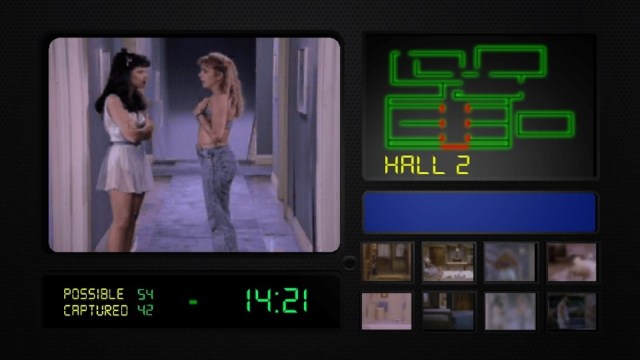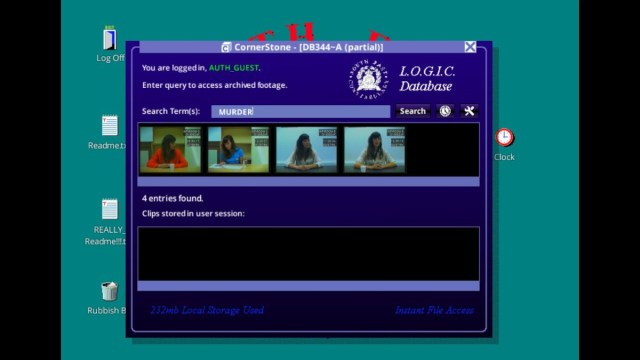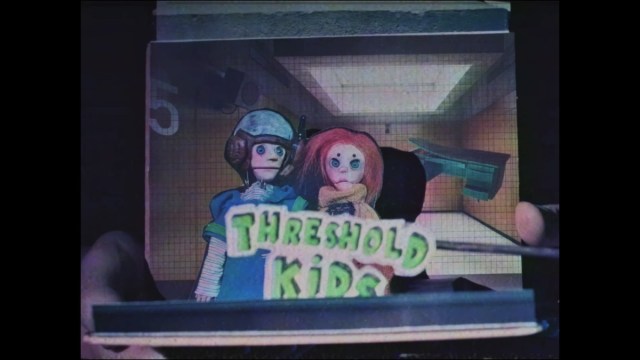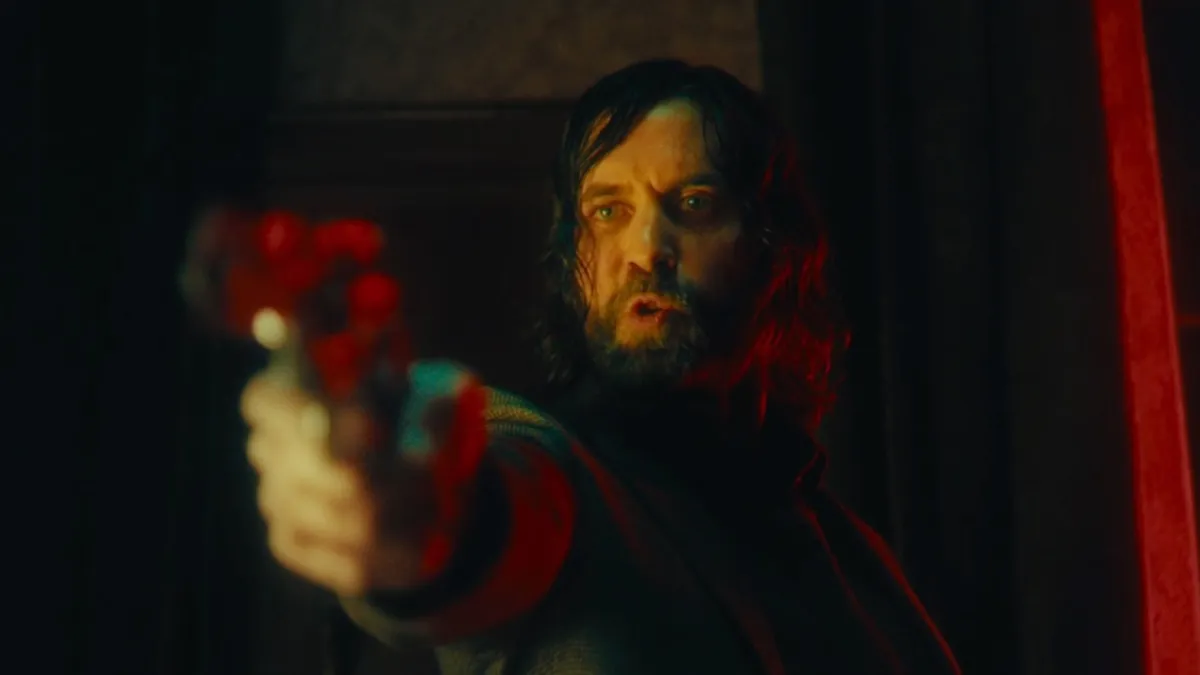Movies and games have always had an ambivalent relationship. Gaming’s the new kid on the block, and it seems pathologically obsessed with clinging onto Hollywoodesque tropes and presentation styles. Nevertheless, with its flourishing popularity, the gaming industry does occasionally show deep-seated desires to forge an independent identity.
FMV games complicate the situation further. They’re not quite movies, as you’re invited to interact with the story. On the other hand, when you have live-action scenes in your game, it’s understandable to feel like you’re engaging with the work of folks who’d much rather be on film sets.
Stubbornly resistant to concrete categories, FMVs exist in a liminal space populated with both potential and pitfalls. Despite producing some of gaming’s earliest hits, this strange genre took a hiatus as creators set their sights on other forms of innovation. As the world turns, we often find ourselves back where we started, and that seems to be the case with FMV games that are slowly but surely being leveraged again.
To truly appreciate the art of FMV and its role in gaming, it’s useful to explore its history just to see how far things have come. For those of you who are new to the genre, welcome, and I hope you discover experiences that expand your perception of video games.

The early days of FMV
Using live-action videos in games used to be a staple during the medium’s early days. For many years, it was far cheaper to simply film a cool cutscene instead of relying on CGI. Perusing YouTube to find some of these videos can be quite the nostalgia tickler.
When we’re discussing FMV video games, we’re typically talking about titles that attempt to be interactive movies. Your actions determine what live-action scene will play next, and sometimes you can interact with elements of the live-action scenes. It’s about as close as you can get to “playing a movie.”
It wasn’t always possible for games to do this; early film only allowed for content to be played linearly. This made it unfeasible to make the kind of FMV games we enjoy today, though, with some deep pockets and ingenuity, you could get past this.
For example, arcade machines could use two projectors, with player inputs determining which image would be displayed. It’s difficult to pin down precisely which was the first FMV game, but many sources point to Nintendo’s Wild Gunman arcade game which used the aforementioned technology.
With the birth of the LaserDisc, a whole new world of possibilities opened up to developers. Now, players could enjoy FMV games without leaving the house. In the 1990s, these types of games gained popularity faster than snow melting in summer, and it was from this era that we gained many of the defining elements that characterize the genre to this day.
They have branching narratives and attempt to weave in meaningful player choices, resulting in higher replay value. These titles also most fall into the mystery/detective or romance genre which is something that disappointingly remains common in modern games, though the acting has mercifully improved.
If we’re discussing 90s FMV games, it’s impossible to not mention Night Trap. Originally released on the Sega Genesis in 1992, the game presents you with a house full of teens being attacked by vampires. It’s up to you to protect the teens by switching between surveillance cameras and triggering the traps at the right time.
Whether the game holds up well in the modern day is debatable. The attire and lingo will remind you straight away that you’re dealing with a pre-millennial relic, but that doesn’t mean it’s no fun. Poke around forums, and you’ll find that most contemporary opinions on the game are negative, but I adore this weird game’s cheesiness regardless.
You can pick the 25th-anniversary edition, and a single playthrough will take you about 30 minutes, though you’ll get hours of gameplay out of it if you try to get all the endings.

The FMV resurgence
Much like your first heartbreak, gaming trends never truly go away, and this still holds when it comes to the use of live-action in the medium. As the industry began to chase graphic prowess instead, FMV games and live-action cutscenes fell out of favor.
This didn’t entirely spell the end of live-action in games, though developers began to implement it in unexpected ways. One of my favorite examples of this is Need for Speed: Most Wanted‘s cutscenes which utilize live-action later edited with CGI to give it a unique, almost dreamy look. We’d see this implemented in Carbon as well.
The current resurgence of ambitious FMV games wouldn’t have been possible without Wales Interactive, which has published some of the most noteworthy games in the genre in recent years. If you’re interested, I’d suggest you start with The Complex, then move on to I Saw Black Clouds.
Of course, Wales Interactive isn’t the only one flexing its creative muscle, and if you’re willing to broaden your horizons, you’ll find some amazing examples of studios blending film and gaming in revolutionary ways. The FMVs I’ll be discussing aren’t Wales Interactive titles – they’ve had plenty of attention paid to them already. Instead, I’d like to highlight some of the other offerings that may have flown under your radar.

Erica – The heights of FMV
My favorite FMV game of all time is Erica, and I’d argue it is one of the best titles in the genre. Developed by Flavourworks, it was originally released as a PS4 exclusive in 2019, and it did a good job of showcasing some of the Dualshock 4’s features, including its Vita-inherited touchpad, which is used to interact with objects in the environment and make choices. A PC port was released in 2021, but I’d advise you to use a controller if you choose to play on this platform.
Erica is a mystery thriller with a story bolstered by fantastic writing and excellent performances. As a child, the titular protagonist’s father is brutally murdered, but it’s clear that this is not an ordinary attack, as a strange symbol is carved into his chest. Years later, Erica receives a package with disturbing contents.

She’s taken to Delphi House for her safety, but soon discovers that there are plenty of secrets to unravel that may give her the answers she needs regarding her father’s death. It’s a layered story that leaves you to decide who you’ll trust and who you’ll abandon when danger strikes. Your choices feel like they matter, and during my three or four playthroughs, I saw a good variety of content.
Its story and gameplay aside, Erica is just an aesthetically pleasing game. Delphi House, with its pastel color scheme and antiquated decor, perfectly teeters between cozy and creepy. The gorgeous use of light is pure eye candy, and some of the settings feel downright otherworldly.
If it was just a Holly Earl-led movie, it wouldn’t be much more than a campy B-rated thriller (which isn’t the worst fate). However, with interactivity to immerse you in the tale, it ends up becoming a unique gaming experience that demonstrates what’s possible when FMV is wielded by experts.

Motesolo: No Girlfriend Since Birth – FMVs and dating sims
As I said, when FMVs don’t go the mystery route, they’ll often take the form of dating sims instead. You’ll find more than a couple on Steam but as is the case with real-world relationships, they won’t fill the void or end the searing existential agony. Nevertheless, for something that manages to stand out in this crowd, I’d direct you toward Motesolo: No Girlfriend Since Birth.
Presented in a quirky, humorous fashion, it centers on Kimo Kang, who has never been in a romantic relationship but is hoping to change that with a blind date. He puts sincere effort into making the date a success, but he is tortured by a conga line of humiliating occurrences that are occasionally too cringe-inducing to watch.
It’s your job to try and direct this date in the right direction and salvage the situation, and the game does a good job of ensuring your choices feel impactful. There were several situations where I absent-mindedly made a choice early on and only suffered the unfortunate consequences much later. I haven’t managed to reach the ending where Yumi doesn’t leave in disgust, and at this point, I’m too dejected to keep trying.

Sam Barlow – Are these even video games?
Sam Barlow’s Her Story is easily the most unusual game I’ll be discussing, and it’s managed to polarize audiences since its release. The premise is relatively simple. You’re presented with a PC desktop so dated it would offend a Luddite.
The computer contains unarchived interrogation videos surrounding the death of Simon. All the interviews are with a woman who introduces herself as Hannah, and she has a personality and a half, to say the least. To view all the videos, you have to enter search terms based on the keywords you hear in the short interrogation clips.
Consequently, the story unfolds in a way that isn’t chronological, which can make it somewhat confusing to follow. If you pay attention to Hannah’s clothing, you can keep track of which interrogation videos occurred on the same day.
I’ve already described all the gameplay available – nothing but entering search terms. Maybe you’ll find this to be the hallmark of minimalist gameplay. It’s equally possible you’ll see it as nothing but a failed experiment that has no right to be called a game. As for me, I liked it and I’m really happy I got to experience something so unique.

Don’t let my nod of approval fool you into thinking I’m not aware of some of the game’s glaring flaws. Depending on what search terms spark your interests first, you could potentially solve the entire mystery within ten minutes or less. The game’s not completely dumb about this – looking up terms like “killer” or “confession” isn’t going to help you much. Nevertheless, it’s not really hard to figure out what’s going on quite quickly.
Perhaps the biggest problem is that its lack of gameplay means there’s no real win state to work toward. Much like my futile life, it exists for the sake of existing, you’re stuck replaying past events you can’t change, and it’s not always clear why you should continue.
Watch enough videos, and you’ll eventually be asked whether you understand Hannah’s story. Say yes, and there’s a final surprise uncovered, though it’s about as shocking as finding microtransactions in a Ubisoft title. If you’re looking for that “I beat the game” or even the “I got to the end of the story” feeling, Her Story isn’t going to provide that.
For something from Barlow that’s a bit more clever with its secrets, try Immortality. It took me a while to figure out how to “play” this game, and there aren’t many clear instructions online, so I’ll try to explain it as simply as possible.

The story centers on Marissa Marcel, an actress who starred in three films and then went missing. By watching her movies, you’re supposed to piece together the mystery behind her disappearance. To do this, you’re presented with video clips from her three movies, as well as an interview.
You unlock more videos by clicking on interesting items in the clips. Sometimes, they’re crucifixes, and other times it’s a woman standing in the background. Like Her Story, it’s up to you to piece together the fragmented story and come to your own conclusions. The interactivity remains minimal, as you spend most of the game selecting more clips to watch in an experience that simulates editing films on a Moviola machine.
The question of whether Her Story and Immortality are video games deserves its own lengthy article. Just take Barlow’s games as interactive experiences and appreciate them for what they are.

Remedy Entertainment, Alan Wake 2, & the Kings of FMV
Fully-fledged FMV games have managed to stay alive, but they’re still exceptionally niche. Despite that, there have been a couple of games that have been implementing live-action in atypical ways, with some intriguing effects.
Remedy has firmly established itself as a leader in this field, and the studio has been experimenting with it for several titles. In Quantum Break, the game’s chapters are interspersed with episodes from a live-action show. I wouldn’t argue against anyone who claims the game didn’t stick its landing, but I deeply appreciate the ambitiousness of the project and its desire to demolish the line between television and gaming.
The studio learned a lot from Quantum Break, including the differences between live-action and video game productions. In an interview with Insomniac’s Ted Price, Remedy’s Sam Lake admits that due to some of the friction endured during the time-bending game’s development, the team decided to scale back the use of live-action in its future games.
Going forward, the studio decided to use it for stylistic purposes and to complement the esoteric themes presented. You see this in Control, where you can find several video clips that give further insight into the SCP-inspired title’s often mind-bending world.

These clips are fitting in a game obsessed with overlaps. We see the natural overlapping with the paranatural, Jesse’s world overlapping with Alan’s, and sometimes even somewhere overlapping with nowhere, so it’s also natural we’d see the real and the animated cross paths as well. The studio doesn’t limit itself to humans in its live-action, as we also see the puppet Threshold Kids.
This concept is greatly expanded upon in Alan Wake 2, which features some of the best use of live-action in recent years, and perhaps in gaming as a whole. Once again, it’s used on television sets, as seen with the hilarious Koskela Brothers ads. This time around, the live-action scenes complement the constant overlapping of the real with the fictional.
Alan Wake 2 is one of my favorite uses of live-action in gaming, and for that, a big thanks is owed to the stellar performances from Ilkka Villi and Melanie Liburd. Furthermore, without spoiling too much, if you explore the Dark Place enough, you’ll find a short live-action film worth watching from start to finish.

FMV and live-action in 2023 and beyond
I’ve already rambled for too long, though this is a topic I could write thousands more words on. Innovation hasn’t stopped in this realm, and you can still find it within titles like Not For Broadcast, which is now available on Steam and PS VR2.
I’m not a fan of movies, barring a few special titles. I find it incredibly difficult to sit down passively while a story plays out in front of me. Furthermore, reading facial expressions, tone, and body language has never been a strong suit of mine. With FMVs, I get a taste of the cinematic world while still being protected by the far more familiar gaming world. For this reason alone, I hope developers continue to experiment in this field to bring us new experiences.






Published: Dec 16, 2023 11:00 am